Concern is growing about wide-ranging local repercussions of the new Setting of Speed Limits rule, rewritten in 2024 by former transport minister Simeon Brown. In particular, there's growing fears about what this means for children.
A key paradox of the new rule is that NZTA-controlled roads have the option to keep existing speeds, where they are working and have strong community support, or where land-use has changed.
However, most towns and cities are not so lucky: they are forced to reverse safe and survivable speeds introduced since 2020 in neighbourhoods and around schools. Even if they're working. Even if communities asked for them and want to keep them.
What's causing the greatest alarm is:
the huge scale of these unilateral reversals (1500+ streets in Auckland alone, which is disproportionately impacted)
the lack of regard for the evidence on safety and productivity, as well as other desired outcomes
and the lack of opportunity for any community voice on the matter
And what's increasingly getting headlines is the perverse fact that it's happening not despite, but because of children.
As RNZ reported yesterday, school principals across the city are saying: this doesn't make any sense.
The outsize impact on Auckland is not just Kafkaesque – it's tragic. It's only happening because Auckland Transport – following international and local evidence, including NZTA guidance, and working hand-in-hand with Council, Local Boards, public health experts, schools, and communities – simply said out loud that it aimed to improve safety for children. The most vulnerable people on the streets it oversees.
That speed management work won an international road safety award in late 2024. Now, it's set to be undone in one fell swoop – even though, as AT's CEO Dean Kimpton told a Council workshop yesterday, Auckland Transport itself opposes the reversals.
Of course AT needs to comply with the law. But it's also clear – from that workshop, from recent council and local board meetings, and in the growing calls for help from worried schools and concerned communities – that this aspect of the new rule is flawed, troubling, and will cause harm, as well as damaging social licence and trust in government.
What's needed is a commonsense correction – and the new Minister of Transport, Chris Bishop, is in a perfect position to see and solve this situation, in a sensible way.
He's already opened the way for discretion in rural communities, and can do the same for cities and towns.
It makes sense. After all, locals know their roads better than anyone, and local communities are telling the government they want more input into decision-making. So what better way for government to respond, than by simply making it easier for local views to be considered when setting speed limits?
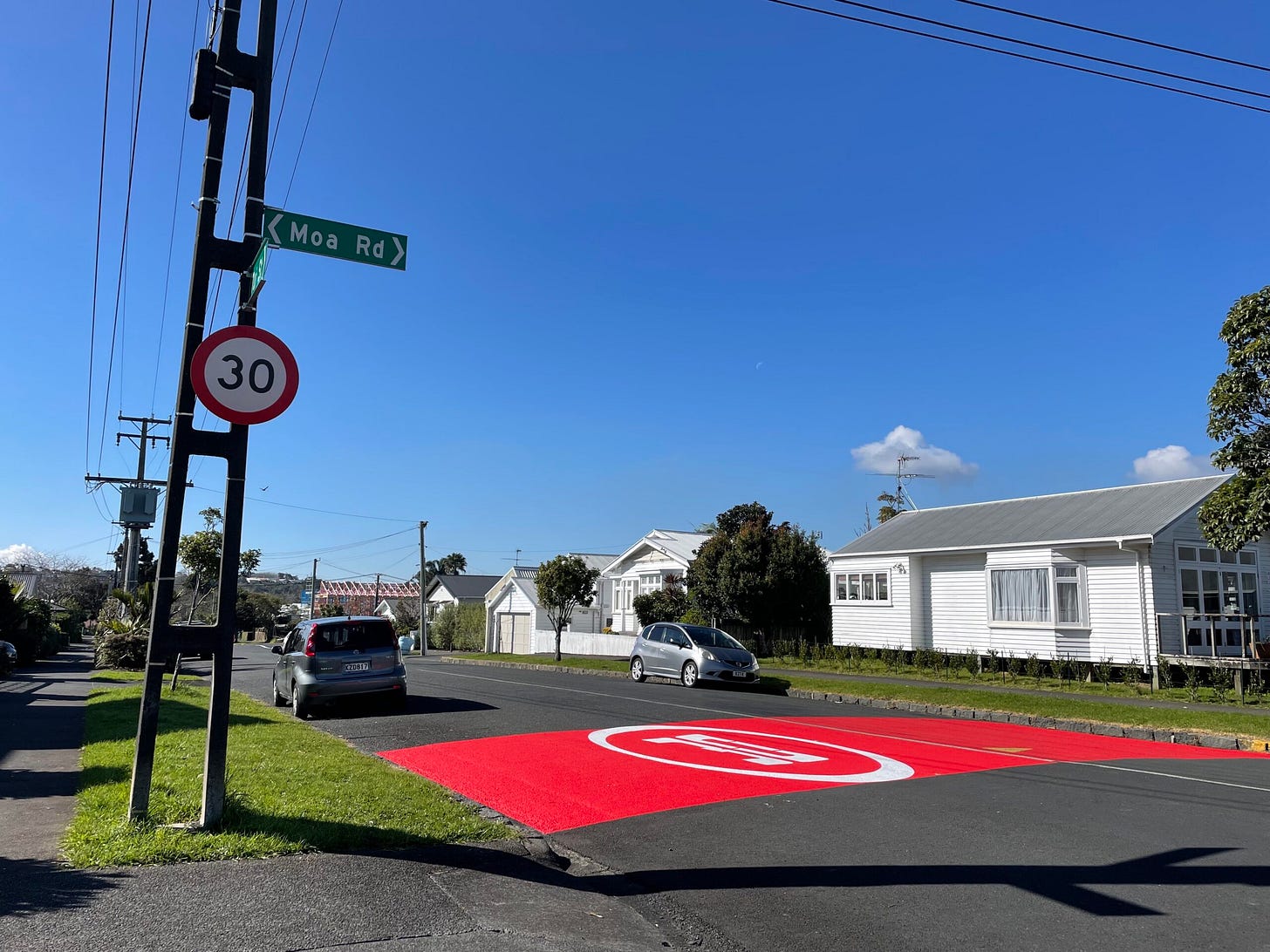
What's the issue?
The key problems are laid out in the judicial review which is currently awaiting a decision on interim relief (potentially, an injunction to pause the changes) on 9 April.
See also this excellent detailed letter to Auckland Transport from road safety and streets advocacy organisations including Brake New Zealand, Living Streets Aotearoa, All Aboard, and Bike Auckland. This was followed by a clarion call for AT to defend its award-winning safe speeds programme from the rollbacks.
In a nutshell, the rule change disregards two important things: the evidence on speeds and road safety, and the duty to ensure a safe transport system in the public interest.
Moreover, the rule is inequitable: it stops many communities from keeping current safe speeds, even if they want to. In particular, it "perversely and unreasonably" targets schools in urban areas, requiring reversal by July 2025 of any 30km/h areas enacted since January 1st 2020 on "specified roads":
(a) a road—
(i) that is a local street (residential or neighbourhood street); and
(ii) for which the Agency (as RCA) or the territorial authority set a permanent speed limit of 30 km/h on or after 1 January 2020; and
(iii) the reason or one of the reasons for setting that speed limit was because there is a school in the area;
In the local context, Auckland Transport has interpreted this "school in the area" clause very literally (perhaps way too literally). As a result, it's cast a very wide net that sweeps up a whole lot of unintended "by-catch" across the city.
As President of Living Streets Aotearoa, Tim Jones, says:
“The huge list of streets that will be made less safe tells me that our largest city – and in particular our children – are being punished just because Auckland Transport made such a strong case that streets where people live, work and go to school must be safe around the clock. This is globally embarrassing for our country, and for everyone involved in applying the rule at local and central government.”
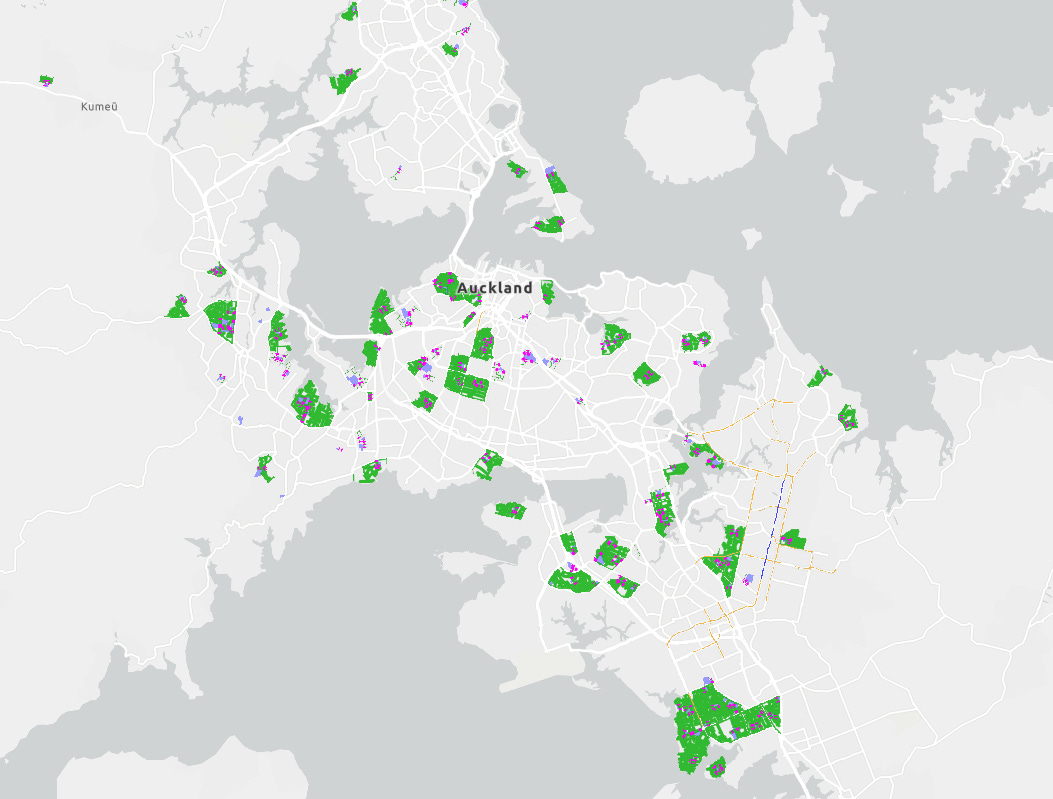
What are some examples of the problem?
Yesterday's RNZ report homes in on the impacts for schools in Blockhouse Bay, Manurewa (which has ongoing issues with unsafe streets), and Avondale. There's also been coverage of the impacts on Waterview, a small self-contained neighbourhood with a growing school bike train and many children who walk to school.
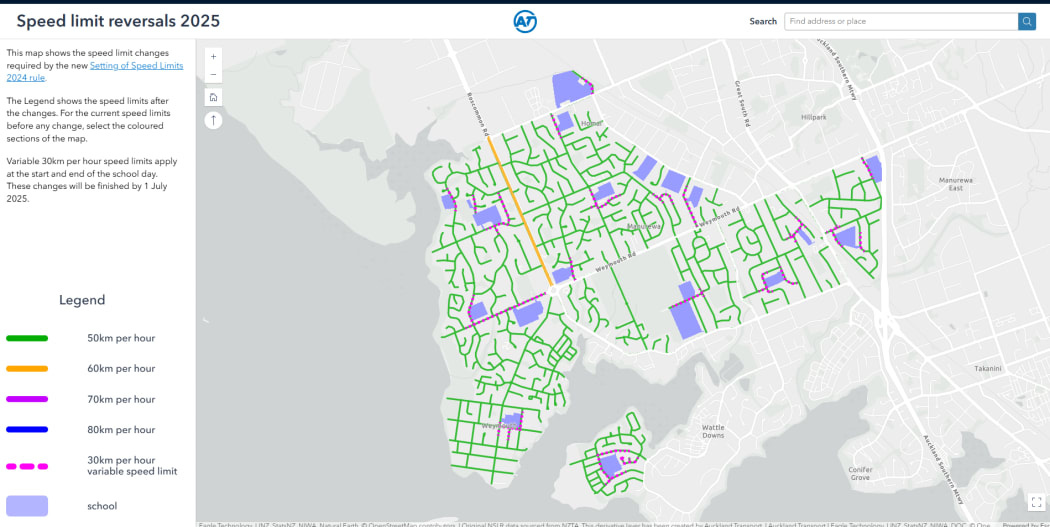
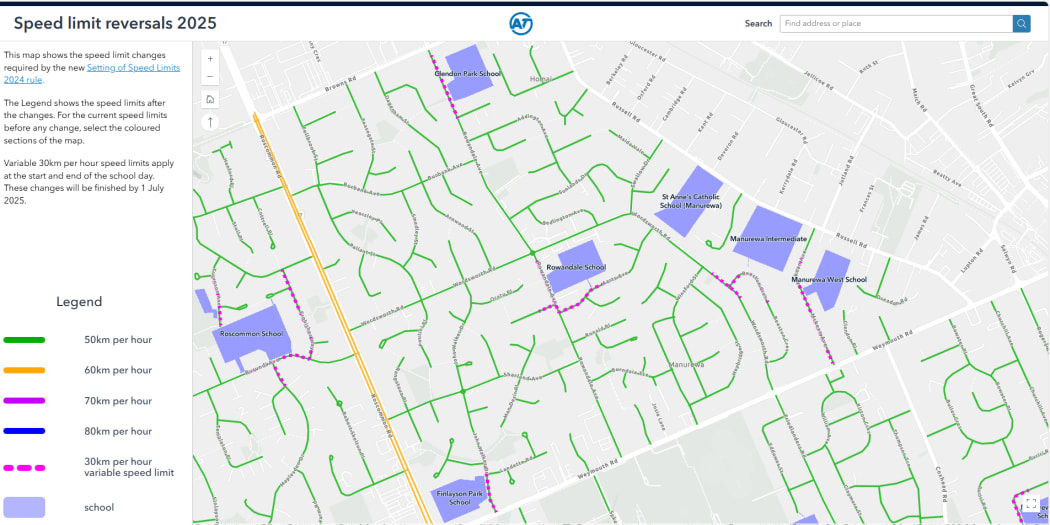
As the principal of Blockhouse Bay School, Neil Robinson, puts it, this is about ensuring survivable speeds across children's routes to school, so that if the worst happens, it's less harmful than it would be otherwise.
"It would be heartbreaking for anybody, including the driver, if a child got hit and they were going such a speed that it damaged the child in any way. I don't think you'd ever get over that."
"What [the speed reversals] will ultimately do I think, is put more and more kids into cars, and less and less walking and biking, because parents will be worried about their children being hurt on the roads.
"There's real benefits to children walking or biking or bringing their scooters, we all know the benefits to their physical fitness and independence and things."
It's important to point out that the 30km/h zones have encouraged more children to walk and bike. The meager "variable" zones being imposed instead around schools only cover a very limited time and space at the school gate (150m in each direction). Which means the vast majority of children's travels will become more dangerous, for more children.
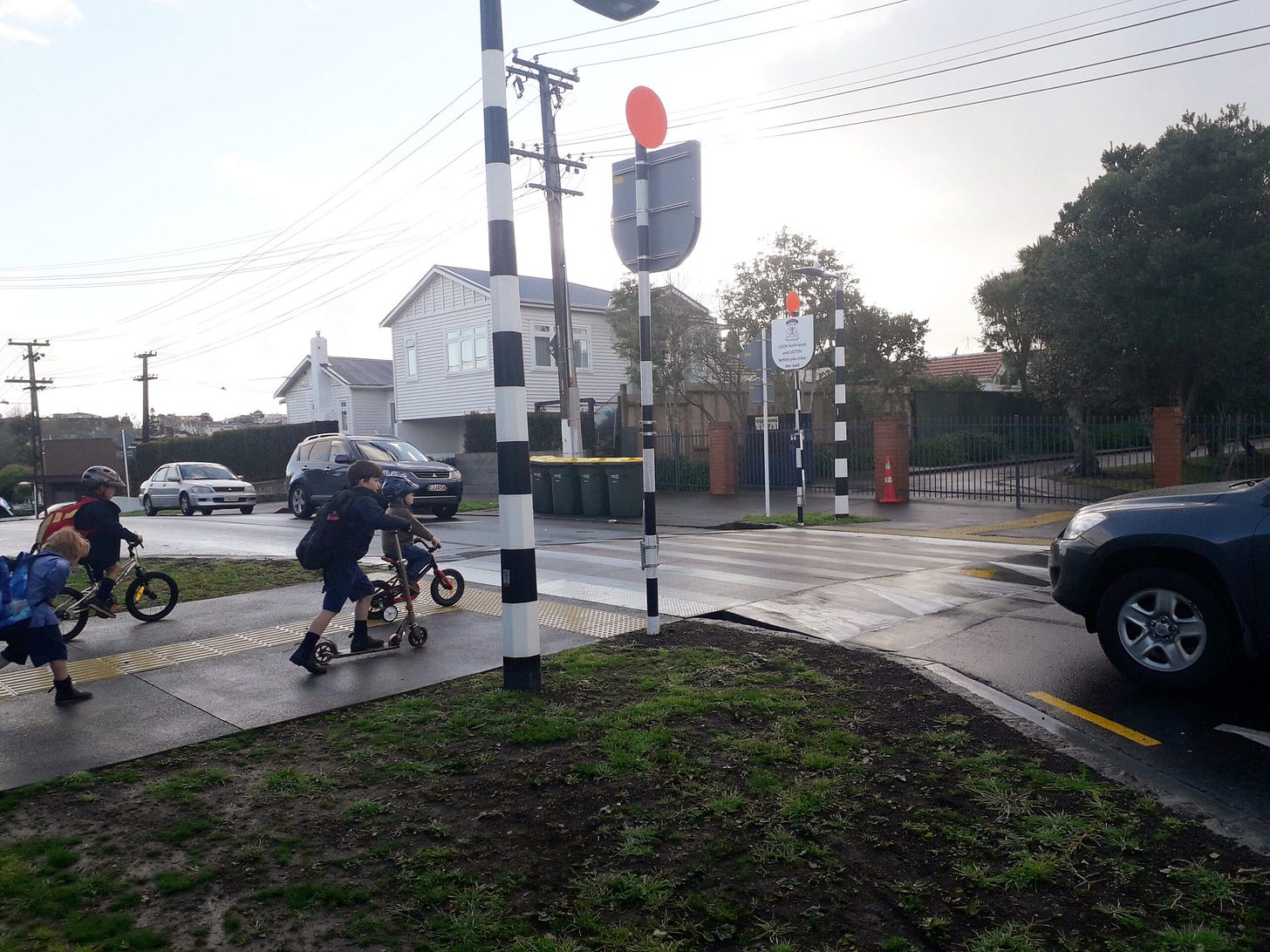
As Christchurch councillor Sara Templeton pointed out yesterday, when urging her Council to hold off on ratifying the changes:
... most deaths around schools happened outside of drop-off and pick-up hours and children walked and biked to school and did not just “magically appear” 300 metres from the gate.
That's backed up by Caroline Perry of Brake, The Road Safety Charity, who notes:
“Our work with schools highlighted numerous reasons why many want permanent safe speed areas, from split site schools with students that walk between them for classes, to schools with childcare centres or sports facilities in use at other times, and those with a Walking School Bus or Bike Train that begins more than 300m from the school gate.
The ‘variable’ speed limits being proposed restrict safe speeds to a limited time and space when we know that 85 percent of road casualties outside Auckland schools occur outside the proposed variable operating times.”
Who's worried?
Lots of people! Communities all around the country are calling for greater consultation and consideration of the evidence, along with road safety experts and advocacy groups.
On the Auckland front, as well as the schools mentioned in the RNZ story, there's a growing list of schools who've contacted the Minister and Auckland Transport asking for action. Likewise, more than one residents' association is speaking up for safe speeds in their rohe.
Updated 21 March to add: the residents of John St in Ponsonby are appalled that their narrow street will revert to 50km/h speeds, which they fear will exacerbate constant rat-running and occasional speeding.
Trying to address the issue is already costing precious time and energy. Schools and other delegations are taking time out of the working and school days to talk to elected members, and Councillors and Local Boards are sitting up and taking note. And, as of yesterday, it seems Auckland Council is considering writing to the Minister to ask for a pause on the local reversals.
The pressure is not just on the Minister, but has dogged the Prime Minister on his travels as well, with 1News reporting:
"Speaking to media in India, Prime Minister Christopher Luxon was asked if the Government had underestimated that communities liked the lower speed limits."
What are the options here?
It's in the Minister's hands. He's already given the nod to NZTA to expand consultation on the roads they oversee. But at this point, local road-controlling organisations (councils, and Auckland Transport) are obliged to make worrying changes that they and their communities disagree with.
In the words of Marie Guerreiro, Executive Director of All Aboard Aotearoa:
"The Minister needs to take ownership of his portfolio and allow for community input before any reversion to more dangerous speeds, and Aucklanders should expect no less than to have their voices heard.”
The Minister can step in to resolve this inequitable situation, and ensure the speed-setting rule gives all communities get a chance to be heard. He might also reconsider the importance of taking evidence and data into account.
True, the outcome of the judicial review may force his hand – cue even more headlines! – especially if there's a court-ordered pause in early April. But wouldn't it be great to see a thoughtful and proactive response before it gets to that point? It would save a great deal of angst all round.
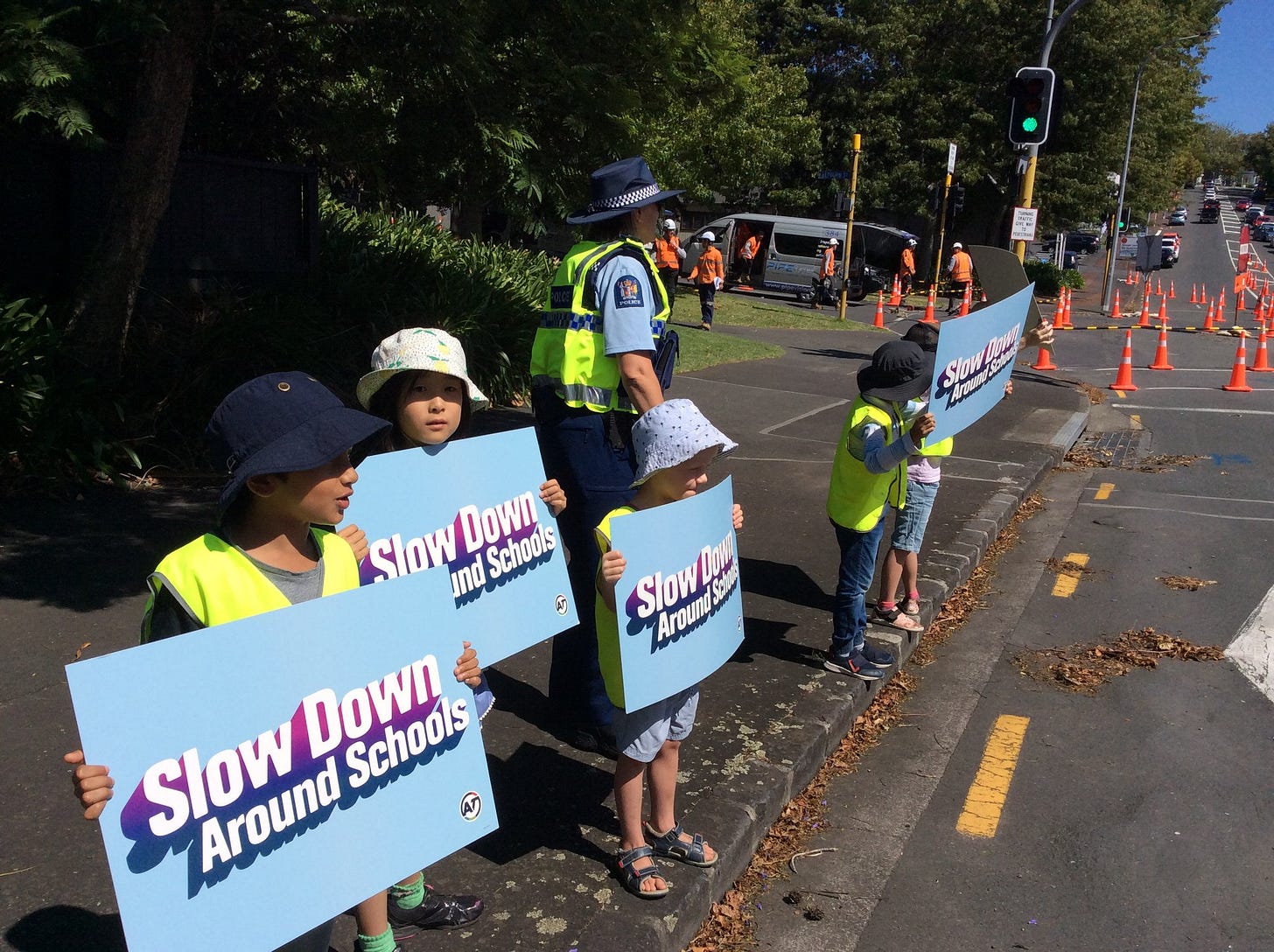
What can we do to help?
Basically, speak up!
The Minister of Transport needs to hear from everyone who'll be affected. You can contact him at Chris.Bishop@parliament.govt.nz (You can also write to the associate Minister James.Meager@parliament.govt.nz )
You can also write to your electorate MP, and contact your local board, your councillor, and transport agency leadership, asking them to stand up on our behalf.
A short email is all it takes. Outline the problem, your concerns, share any personal stories, local examples, and local data (the Healthy Auckland Together scorecard is handy), and ask for a reasonable response before it's too late.
Sooner is better than later. Regardless of the outcome of the judicial review, our streets need to be safe – and communities need to be heard. A wholesale, top-down reversal by government of a whole lot of thoughtful, evidence-based local speed limits just ain't it.
Reach out and take action. Highly visible actions and conversations have helped raise awareness about the benefits of safe speeds around schools and in neighbourhoods. Consider what you can do with friends and neighbours to bring attention to the issue in your area.
Check out Connor's guide here for more on what you can do and say to help right this wrong before it's too late. We're all in this one together, and we have much more in common than you might expect.
Header image: School children holding signs asking drivers to slow down, from an Auckland Transport pamphlet entitled "Speed at the School Gate".




Thanks again Connor. Have written to Minister, MP and Local Board. Great response from Local Board and MP's office. Nothing other than an automated acknowledgement response from the Minister's Office (unsurprising!)